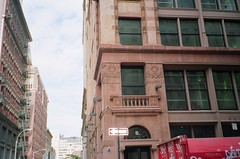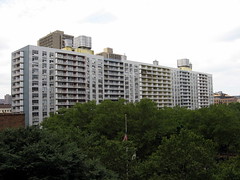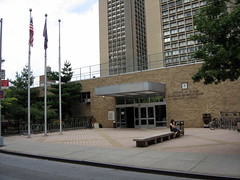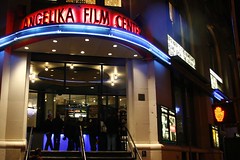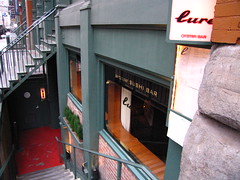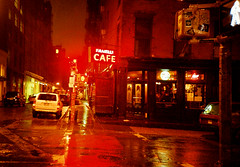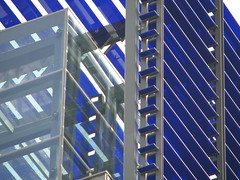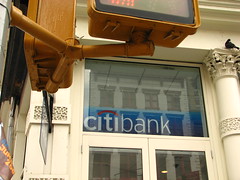East:
Block (667-677 Broadway): NYU dorms built on site of Metropolitan Hall,
aka Tripler's Hall, which from 1850 to 1859 featured performers like
Jenny Lind and
Adelina Patti (only 10 when she sang here in 1852). That
same year a memorial service for author
James Fenimore Cooper was held here, conducted by
Daniel Webster and featuring addresses by
Washington Irving and William Cullen Bryant. In 1853, the theater
hosted the World's Temperence Convention, featuring
Susan B. Anthony, Horace Greeley and P.T. Barnum.
After fire destroyed the hall in 1859,
the Winter Garden Theater was built here
(originally called the New York Theatre and later
Burton's Theater). On November 25, 1864 theatrical
brothers Edwin, Junius and John Wilkes
Booth performed here together for the only time in their careers,
as a benefit to raise money for the statue of
Shakespeare in Central Park--in
Julius Caesar, a play about an assassination.
The theater was replaced by the
Grand Central Hotel (aka
the Broadway Central Hotel), on whose staircase
on January 6, 1872, Edward Stokes fatally
shot financier Jim Fisk, his rival
for the affections of singer Josie Mansfield.
It was also the home of
Arnold Rothstein, a gangster who is
said to be the inspiration for The
Great Gatsby's Meyer Wolfsheim and
Guys & Dolls' Nathan Detroit.
Renamed the University Hotel, it
collapsed in 1973, killing four tenants and destroying the
Mercer Arts Center, which was in the
same building on this side of the
block. A performance space called
The
Kitchen opened there in 1971 in the hotel's
former kitchen; still continuing though
now in Chelsea,
it's nutured such artists as Laurie
Anderson, Philip Glass, Elizabeth
Streb and Bill T. Jones.
|
